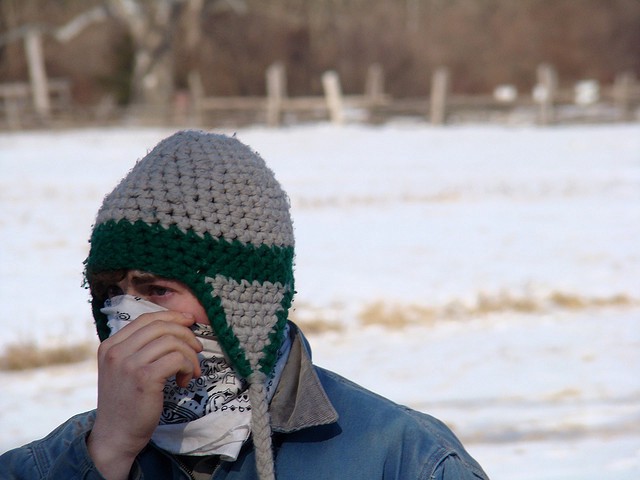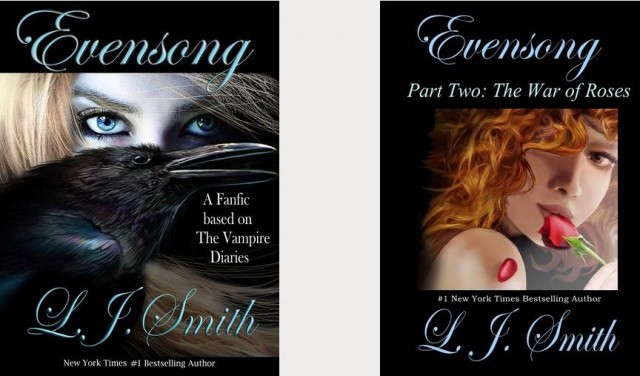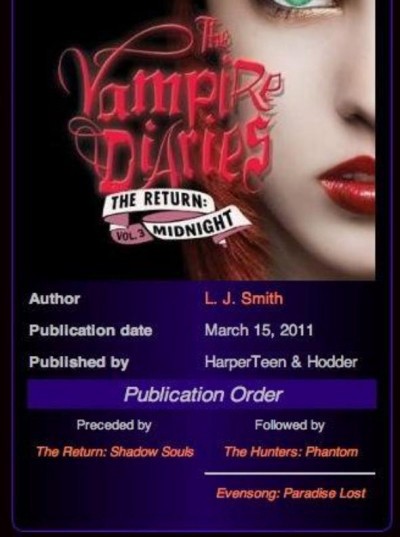Let's Get Small
Instead of shelling out on gigantic McMansions, the homebuyers of today are opting for smaller, more manageable spaces and cramming every corner full of expensive crap. I mean, the money still gets spent, don’t worry.
New York Mayor Forced To Declare That He's Never Had Sex With A Man
“At 10 a.m., Mayor de Blasio donates blood. He’s hoping you do, too, as supplies are running low. Here’s how.
After his post-bloodletting cookie, the mayor makes an announcement at noon, then receives former members of Pussy Riot at City Hall in the evening.”
— Being mayor is clearly weird enough. But then you also have to admit that you meet the criteria to donate blood? Very personal! Anyway, you should give blood too, if you can. I’ll just be over here, enjoying all my blood. (video via)
Bodies Given To Science
by Natasha Vargas-Cooper
Sometimes when we walk through the mall, my boyfriend Scott will whisper: “How many people here do you think have held a human heart?” Or: “Do you think that guy ever removed a brain?” Scott has held a human heart and he says it’s heavier and whiter than you would think. He will remove a brain from a female cadaver in March.
Scott is in his second year of pre-med. He, along with two other students, based on their high grades in anatomy class, are the body preppers for this semester’s anatomy lectures. The dissections are supervised by two part-time anatomy professors. One practices as a physician’s assistant, the other as a chiropractor. His entrance into the small cadaver club has triggered an obsessive fascination in me about the logistics of body donation, dissection and disposal.
Scott’s school has three cadavers on loan to them from a major university in California. When Scott’s school is done with the three bodies, they will be sent back to the university.
To donate your body to science in California, you fill out a form, have it signed by two witnesses and then notarized. The other way the bodies come to the donation program is through next of kin. For instance, when my grandfather died, I was told my mother called UCLA and they came and picked up his body from our house within an hour or so of his passing.1
Each body donation program in California — there are only a handful — has its own standards but they are all roughly the same: they do not accept bodies that have had major trauma or had their organs (besides the corneas) removed. Many do not accept the bodies of people who are more than 250 pounds overweight. They will, however, come to your house and pick up the body; some will also make arrangements for the body to be transported back to California if the donor dies out of state. Not UCLA; UCLA will ask you to pay if the body is more than 75 miles away; Stanford’s cut-off is 100 miles. They want the bodies right away.
Before the university transports the body to Scott’s college, the body is treated with chemicals inside and out. A tube connected to a pump is inserted into the jugular artery to flush out as much blood from the body. Blood clots very quickly and sometimes the clots will stay inside the arteries and calcify. During his last dissection, Scott described removing hardened blood clots the size small rocks. They were a muddy brown color. Some were less than solid, he described those as “mealy.”
The artery is then tied off with a little string. The skin is coated in a mixture of chemicals that absorbs its moisture. These two procedures allow the body to be so well preserved that they do not need to be frozen when stored at the college.
Donated bodies can last for two years, or longer. I was under the impression that once a cadaver’s ribcage or arm was removed, they were not used again and a new body was brought in. I have no idea where I came up with this idea, and this is not the case. A cadaver can undergo an infinite number of dissections for roughly two years. When organs are removed in order to be shown to students, they are then put back inside the cadaver. To expose muscles, ligaments or bones, a careful incision is made so the skin can be used as a flap. That way it can be opened and closed several times over.
At all times, per the university’s instruction, the cadavers have a thick green opaque sheet that covers their face and genitals. Scott said this eases a lot of the student’s initial queasiness. It also gives the cadavers an aura of otherworldly gravitas. The sheets say: This person is not here anymore, they are safe and you are safe.
The three loaner bodies are kept in a cadaver room at the college. The cadaver room is part of a gleaming and modern new building that’s just a few years old. The cadaver room looks like a hospital’s operating room. There are three beds for the cadavers, bright overhead lights, pearl gray floors, shelves for the tools. The tools are “German steel.” Above the bodies are giant “snorkel vents” that circulate the air and control the temperature.
The students are hyper aware, supremely focused and silent in the cadaver room, Scott said. The room feels charged with a serious and somber magnetism. No music is played while the students spend hours making tiny incisions. Chat is kept to an absolute minimum. This is to ensure the dignity of the entire process, Scott said. The snorkel vents are too loud anyways.
The color palette of cadavers is different from what you’d maybe think. Instead of pinks, purples, reds, and blues, most of what you see is gray, white, brown, yellow, and clay. Except the gallbladder. The gallbladder is electric green.
Everything that is removed from the body — fat covering an organ (did you know that all our hearts are covered in a little yolk-sac of fat?) or the sticky cobwebs of connective tissue are placed in a biohazard bag. The bag is never far away from the body. When a body is returned to the university after its service, the biohazard bag travels with it.
Back at the university, the arms and legs are removed, catalogued and then stored in a library for medical students. Future surgeons, medical researchers and med students can access limb library. The rest of the body is incinerated.
I asked Scott if he wants his body donated to science now that he’s seen what happens. “Absolutely,” he said, and “No question.” Whatever hesitation he originally felt when making his first incision was washed away by a powerful wave of wonder. “The body is unbelievably intricate and detailed; just the ligaments in the foot are mind-blowing,” he said. “You are looking at millions of years of evolution and it stuns you. It’s a privilege.”
Next week Scott and his fellow students will remove a liver.
1 I asked my mother last week about them having donated my grandfather’s body to science. “Oh, I think that’s a lie we told you,” she said. I was 12 when my grandfather died in our house. He was sick for a very long time. We were in the room when each of his breaths grew further and further apart and then stopped altogether. “We called a funeral home to come get him from the house and then we had him cremated. We had the ashes in the house for a few weeks before your grandmother could fly them back and have them buried in Chile,” she said. So they lied. “We didn’t want to freak you out.”
Natasha Vargas-Cooper is a reporter in Los Angeles.
New York City, February 5, 2014

★★★★★ “It’s so fun, the snow,” the toddler said, with the confident judgment of innocence. The world was suiting his desires now at midday. He had been up and yelling at half past three in the morning, most likely stirred by the brilliant pink glow coming through the windows, the unreal snow light. I want to sleep in the big bed. The glow had also pulled the adult further out of grogginess than usual, into competence: No. Lie down. No. Go back to sleep. Now. By the time everyone woke up again, the pale blur of fresh, accumulating snow had changed over to something else, wet and grotesque. Ice was building up on the windows; sheets of ice were bursting loose and coming flipping down through the air, end over end, dozens of fragments plunging past like titanic snowflakes: the size of dollar bills, sheets of paper, shoebox lids. A broken triangle as big as the top of a coffee table. Meteorological-architectural horrors. The drizzle outside was imperceptible if you had your back to it, harsh if you turned to face it. Lakes of loose slush swelled behind dams of firmer slush. The trees were glazed and stubby icicles dangled from a restaurant’s festive outdoor light bulb strands. Strollers wallowed or jammed to a halt. Crossing the median of West End with one required a portage. The basic urban assumption, that things would ultimately be passable, was null. The trains were by all accounts hopeless. The toddler, in his lurching stroller ride home, wanted nothing more than to get his rubber boots on and get back out, at once. So: “So fun!” The little boots tramped an excited loop in the snow in the building garden. By now the drizzle had turned into a light rain, darkening the child’s coat. Apocalyptic ice fragments were still plummeting and shattering with each new gust of wind, but up close they were paper-thin, harmless. It took no effort at all to make dense snowballs, or a tiny, heavy snowman. For eyes, there were the bud-ends of freshly killed green twigs, strewn on the frozen top crust.
Where To Get Coffee Off The Train
Here’s a map that’s going around of “the best coffeehouses in Manhattan, by subway stop.” I’m sure some people who are super-serious about coffee will complain that they know better places and the ones picked here are for palateless poseurs, but that is what they do best, super-serious coffee people, complain about coffee and the places to get it. It is almost like they are addicted both to caffeine and being annoying as fuck about a basic beverage. Anyway, this seems like a keeper.
Being Cold and Shivering Is Technically Exercise: Science

“Shivering in the cold sparks a series of biochemical reactions deep within the body that alters fat cells and bolsters metabolism, much as formal exercise does, according to a fascinating series of new experiments. The findings intimate that exercise and shivering are related in ways not previously suspected.”
— Unfortunately, this study also finds that working out in the cold is no better than working out in a comfortable environment. Also God clearly does not want us to be healthy; every conceivable route to a fitter body is littered with land mines of pain and discomfort. Just stay in bed and order a delivery meatball sandwich. It’s what He would want.
Photo by istolethetv
'Punk 45' Not Just For People Who Are 45
If February really does shake out in the way that it seems like it’s going to so far, this might be a mandatory purchase. You can seethe and soothe at the same time! Recommended.
Cookie-Eating Bear Provides Brief Respite From Horrors Of Daily Existence
I can speak to neither the provenance nor the freshness of this piece — the terrible secret that no one wants to discuss when it comes to Russian bear videos on the Internet is just how many of them are actually older clips unscrupulous embed jockeys have uploaded under different accounts to create the illusion of recency — but I can say that if you are in the market for approximately five minutes of a bear eating cookies you have come to the right place. I’m about to watch it for the third time today, won’t you please join me?
G.I. Joe's War
“The birthday of what’s called the world’s first action figure is being celebrated this month by collectors and the toy maker that introduced it just before the nation plunged into the quagmire that would become the Vietnam War — a storm it seems to have weathered pretty well.”
The Writer Who Beat The System: How One Woman Resurrected Her Sexy Vampire Brothers
by Mike Pearl

J.K. Rowling recently told Wonderland magazine that Hermione and Harry would have made a better couple than Ron and Hermione. It shouldn’t have mattered. Apart from the fact that we’re talking about the romantic lives of make-believe wizards, not only would Roland Barthes yawn at the author’s opinion about her own work, but the fans had already paired off Harry and Hermione themselves — nine years ago.
But the opinions of authors can’t help but feel more canonical than the things we internet denizens dream up ourselves — particularly when you take into account the connotations that the term “fan fiction” carries for most people.
L.J. Smith’s newest book, Evensong: Paradise Lost, is a work of fan fiction. It’s based on the characters from The Vampire Diaries, the books that gave rise to the TV phenomenon. As with all fan fiction, it’s set in a world to which Smith has no legal right.
But one unique quirk sets Smith’s work apart from most fanfic. She is the original author of the series, now banished from officially contributing. So she is finishing the series by means of a new enterprise: Amazon’s Kindle Worlds, the world’s first corporate venue for fan fiction.
Smith’s authorship lends her new work an unusual and hard to comprehend status: It’s the first work of unofficial-official canon.
Gray areas like this could elevate the respectability of fanfiction itself, a medium that, depending on whom you ask, desperately wants to be elevated to respectability — or doesn’t want or need your goddamned approval to be considered legitimate.
Lisa Jane Smith, Vampire Queen
Lisa Jane Smith is famous for her young adult novels about witches, psychics, and, most of all, vampires. She’s also noted for her candid fan correspondence (and some outdated-looking author photos that make her look like a fabulous 1970s country singer).
L.J. Smith fans claim her as the progenitor of the smoldering young adult vampire phenomenon. Anne Rice’s gothic novels aimed at adults were resurgent in 1990, when vampires were on the wax again after a brief wane. Around that time, HarperCollins turned to a book packager called Alloy Entertainment to hire someone who could churn out an upscale vampire series aimed at teenage girls. Smith, then a young and hungry novelist, took the job, but she didn’t invent the series out of thin air. Most likely “The Vampire Diaries” was a title and a marketing campaign before Smith came on the scene — she just fleshed out the middle part. You know, the setting, characters, story, rules for the entire world? That sort of thing.
If you aren’t already hip to “The Vampire Diaries” phenomenon, it’ll sound vaguely like Twilight but a little less dour. A small town girl, Elena, finds two vampire brothers named Stefan and Damon. They vie for her affection, and a town full of teens is pulled into an exciting supernatural world of romance and intrigue.
The part about being more fun than Twilight may be an accident. Smith takes this material just as seriously as Stephenie Meyer, and the books really don’t share the TV show’s seemingly deliberate campiness. Also critical to your understanding of Vampire Diaries fans: The actors who play the TV versions of the vampire brothers are the objects of that very particular and intense brand of Internet worship.
But back when The Vampire Diaries were just four dishy books rattling around the backpacks of teens — the first three books were published in 1991, the fourth in 1992 — a parallel tale of intrigue was unfolding in Smith’s professional life. By her own accounts, Alloy hid Smith’s name in a tiny corner of the original cover. Because it was so successful, the packager commissioned a different series from her, but literally laughed in her face, Oliver Twist-style, when she asked for more money. After the fourth book, which fans begged for, was published, Smith took a long hiatus from the series. Fan fiction carried the torch for her while she was away.
Varieties Of Fanfictional Experience
Evensong isn’t an official Vampire Diaries trilogy, but picks up where Midnight left off. The fanfic series will eventually go to endgame.
— L. J. Smith (@drujienna) January 25, 2014
As an urbandictionary user put it, “50% of fanfiction is crap, 24% is non-crappy smut, 25% fits into the category of crap and smut, and the remaining 1% is some pretty good stuff.” If you think fanfiction is a bunch of stories about Harry Potter hooking up with Professor Snape, you are not wrong. There’s so much of that online that there’s a name for it: Snarry. Twilight fans on Team Jacob have had their way countless times thanks to fanfiction. A subset of the Bronies writes “clopfic,” situations involving My Little Pony characters that will make your hooves curl.
That’s just the smutty stuff though. Want to find out what drives Chiwetel Ejiofor’s character in Children of Men, or find out whether Maude Lebowski really did have The Dude’s baby? Only the fans can help you.
By my count, no fewer than one hundred Vampire Diaries stories were uploaded to fanfiction.net during the series’ publishing hiatus from 1992 until 2009, when the TV show and the new books appeared. No doubt others were uploaded elsewhere, or never shown to the world. They seem to average roughly 15,000 words. Many feature “Mary Sue” characters, a fanfic term for a surrogate, created for the author to insert him or herself into romantic situations with the characters. Some are pretty crudely sketched: “The sounds of rampant sex weren’t doing anything to aid his sleep, and frankly he didn’t need it rubbing in his face that he just wasn’t getting any…” and others are evocative: “Watching the bowl slowly fill, she noted the subtle twitching of her hands and cursed quietly, clutching the rim of the sink until her knuckles turned white.”
Few had Tolstoyan aspirations, but there they were. If you craved stories about sexy vampire brothers with the same names as the ones in the book series you liked, you had options. But often the stories bore messages at the top such as “Disclaimers: VD, Stefan and Damon belong to LJS.” Fans were showing deference, but were not, legally speaking, providing proper attribution.
Then There Was Edward

By 2009, Twilight had happened. Since Alloy is very good at what it does — around this time, Rebecca Mead of The New Yorker called them “the teen entertainment factory” — and since they controlled the property completely apart from Smith’s desires for the characters, in addition to re-imagining the whole TVD universe as a TV show, the books were dusted off and reprinted with fancier covers. Soon they were flying off shelves.
And after a short time, out popped the first entry in a new trilogy, the L.J. Smith-authored The Return: Nightfall, perhaps the oddest 608 pages ever marketed to young girls, even giving the nutso Twilight: Breaking Dawn and its werewolf-in-love-with-a-baby-that-chewed-its-way-out-of-its-mother storyline a run for its money.
Smith called it the worst book she’s ever written, saying she may have been “rusty” when she wrote it. Fans generally agree. Perhaps more displeased than anyone were the executives at publisher HarperTeen, who were hoping for something that matched the TV series.
But even if Nightfall had stayed on the rails, the books and TV show could never actually gel canonically, and that was no fault of Smith’s. Elena as played by Nina Dobrev was too tough and assertive to be the delicate flower from the novels. The character Bonnie was more of a witch than the psychic she was in the books. A possible Stefan and Elena coupling always seems possible on TV, but in Smith’s last official book, Midnight, she wanted to bring them further apart. Midnight was number one on The New York Times bestseller list — but L.J. Smith herself had become disposable.
After what Smith calls “The Call That Changed My Life,” an Australian fan receiving a response to a complimentary email may have been one of the first members of the public to hear the bad news: “…I have been fired from writing the Vampire Diaries,” she wrote. “Midnight is the last book you will ever see by L. J. Smith in this series. I even wrote the next book, Phantom, for the book packagers and my publishers, HarperCollins, but instead of sending me edits, they sent me a letter addressed to the anonymous ghostwriter who will be taking over the Vampire Diaries series.”
Phantom — the first in the next Vampire Diaries trilogy — was ghostwritten, perhaps completely, and released in 2011. On the fan wiki, where devotees catalogue the minutiae of the TV show, and, to a lesser extent, the books, the article carries a warning: “Before buying this book be aware that it was NOT written by L. J. Smith but by an anonymous GHOSTWRITER.” She has a name: Aubrey Clark. Clark has soldiered on; Unseen, the middle of yet another trilogy, was a bestseller hitting shelves last May. That was just six days after Amazon’s announcement of Kindle Worlds.
And then, on January 15th of this year, L.J. Smith issued what in her profession amounts to a surprise press release: an update on Goodreads. It was the first official notice anyone had received that a new L.J. Smith Vampire Diaries book was on the way, and it left readers with just one week of frenzied anticipation. It also provided some context about Amazon Worlds: “The Vampire Diaries is one of the series that Amazon has obtained the license to include in their Worlds. This means that I can continue to write my version of The Vampire Diaries.” And it also provided some much needed story chronology: “The Evensong arc will pick up more or less where Midnight left off and takes place in an alternate world from the official books that follow Midnight.” The fan fiction writer would now overwrite the canon.
Worlds Inside Worlds

Kindle Worlds announced itself as a platform where fans of world-building fiction can market and sell their stories over Amazon’s Kindle marketplace. Amazon has permission to let users submit stories that fit into select fictional “Worlds” — authorized by the owners of the intellectual property — for profit. (Specifically, a cool 35% share of sales.)
Mainstream blogs mentioned it in passing with a let’s-see-what-happens-here tone. In the fanfic community, reaction to the news was mixed. YA author and advocate Malinda Lo wrote a blog with the headline “Amazon tries to monetize fan fiction; I freak out,” in which she didn’t so much shred Kindle Worlds for mistreating fanfiction as identify it as something separate from fanfiction. “This isn’t Amazon figuring out how to make money off fan fiction; this is Amazon entering into a partnership with media properties to crowdsource officially licensed novelizations.” She compared it to the work of Timothy Zahn, who wrote novels within the Star Wars universe in the early nineties. The Star Wars Expanded Universe is a carefully catalogued canon in its own right.
The Worlds of Kindle run the gamut from current properties with active fan communities to genre books and comics probably hoping to raise their profiles through inclusion in the new service. A significant chunk of them belong to Alloy Entertainment, including The Vampire Diaries, Gossip Girl, and Pretty Little Liars. More have just been announced, including the worlds of Alloy’s Veronica Mars and Ravenswood, more Valiant Comics, something called the Abnorm Chronicles, and The Lizzy Gardner Files. Their big get, G.I. Joe, comes with easily the strangest guidelines for authors.
Kindle Worlds is pretty straightforward about what’s normally allowed. Don’t get Amazon in legal trouble by having Veronica Mars flagrantly endorse Toyota or something. Keep it typo-free. Don’t suddenly bring in Spider-Man or some other world as a crossover — even if they can use that world, keep them separate. Don’t write erotica. Oh, and if you’re writing in G.I. Joe World, Snake Eyes is not allowed to be a fan of The New York Yankees.
Malinda Lo points out that “Fan fiction is based on (let’s face it) doing what the original author(s) would probably not do: slash pairings, crossover stories (who doesn’t love a crossover?!), hot steamy sex, etc.” I asked Philip Patrick, Publisher of Kindle Worlds and Director of Business Development, about this. “Kindle Worlds won’t be for everybody, and that’s OK,” he said. But he pointed out that sex and crossovers would be nice, if they can find a world licensor who will go for it. “We’ve published erotic content in the Worlds that allow for it,” he wrote in an email.
Kindle Worlds wasn’t advertised as a place for people already established in the industry, but, much like how Zach Braff and Zosia Mamet arrived eventually on Kickstarter, it’s following that path. Before L.J. Smith, “Hugh Howey (better known as the bestselling science fiction author of the mega-hit Wool) just published a story called Peace in Amber in The World of Kurt Vonnegut,” Patrick pointed out. It’s a 9/11 story told within the Slaughterhouse Five World. Admit you’re a little curious. (It has a straight streak of five-star reviews.)
Fans also love Smith’s fanfic. It’s currently ranked number one in Kindle Worlds, which has published more than 340 stories in six months, though it’s only in the 10,000s in the Kindle store overall. Performing some very rough calculations using the Kindle Rank Calculator, that means, in the past few weeks that the book and its partial sequel have been on The Kindle Store, Smith has likely earned a few hundred bucks to date in royalties — presuming she’s operating at the 35% level. It could be that Kindle Worlds isn’t going to be a major source of income for authors. Patrick wouldn’t discuss revenue, but told me, “This is a very new business model and we don’t have everything figured out yet, but we’re always open to hearing how we can improve the process.”
For now, Smith can bask in her ecstatic Amazon reviews. “Thank God for Kindle Worlds! I am so glad that L J Smith has finally gotten the opportunity to finish telling her version of The Vampire Diaries story! I have refused to read anything that the ghost writer has written because to me it betrays the real author and the real story,” goes one. “I am beyond thrilled that my life can now be complete with the fanfic continuation of a truly great story!” goes another.
The Headcanon

Unlike other Vampire Diaries fanfic, the Evensong arc has its own section on the fan wiki. To make matters more confusing, the page for Midnight has a split in the chronology — it’s now a choose your own adventure, where readers can now branch off into the official canon in one direction, or can journey on into the new L.J. Smith canon.
It’s exciting and unsettling to see fictional worlds fragmented in this way. Staying emotionally invested in worlds can be exhausting when they are subject to constant reboots, or when contradictory timelines get justified by elaborate ret-cons, or when narrative is straight-up segregated into what ifs. But plain old contradictions have an air of myth. Did Agamemnon sacrifice Iphigenia, his eldest daughter, to the goddess Artemis, or did Artemis save her? Accounts differ. Does Elena wind up with Stefan, or Damon? Accounts differ.
When I began learning about the world of L.J. Smith, I found her heroic. Alloy had sold her down the river to please their most superficial fans. To my mind, even their licensing The Vampire Diaries World to Kindle was a cynical cash-grab — and so it was delightful that, through that act, L.J. Smith had found a back door, a wonderful legal route to revenge. Over time, I came to see Alloy’s point of view as well. To their minds, The Vampire Diaries never belonged to Smith. Sure, they put her name on the cover. Books always carry an author’s name, not least because the draw of an author can be a useful sales tool. But when you look at it from their perspective, L.J. Smith had always been writing fan fiction.
Mike Pearl writes for VICE, and has been featured on DeathandTaxes and Grist. He is not the fundamentalist pastor of the same name.
